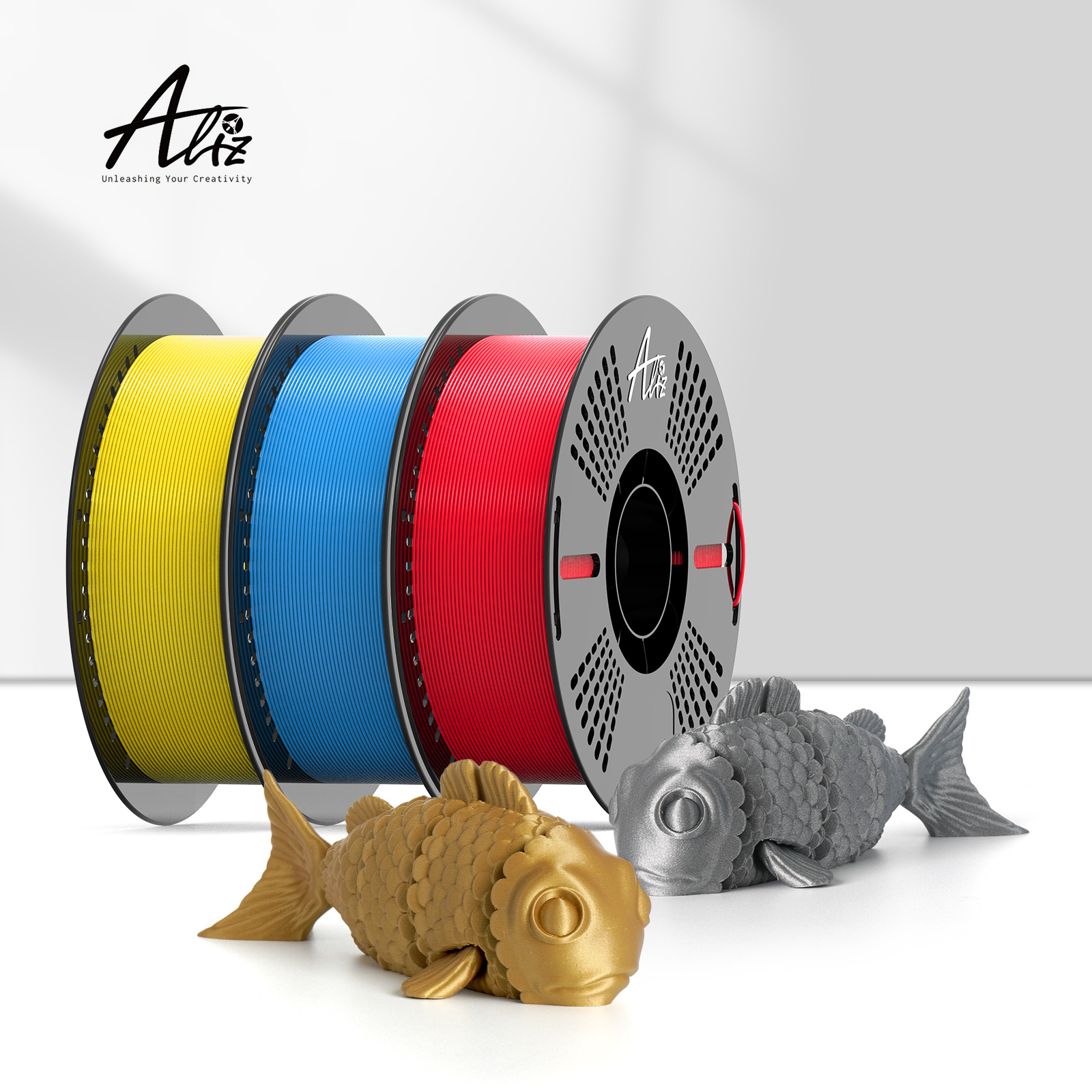
Introduction to 3D Plastic Printer Filament
3D printing technology has transformed the way industries approach prototyping, custom part production, and even the manufacturing of finished products. One of the key components of this technology is the 3D plastic printer filament, which is used to build objects layer by layer in a 3D printer. These filaments come in various types, each with unique properties that make them suitable for different applications. In this article, we will delve into the world of 3D printer filaments, focusing on the most commonly used materials and their specific characteristics.
What Are 3D Printer Filaments?
A 3D printer filament is a long strand of material that a 3D printer uses to construct an object. The printer’s heated nozzle melts the filament, which is then extruded in layers to form the final print. Filaments are available in different diameters, typically 1.75mm and 3mm, and are made from various plastic materials, each offering specific characteristics that make them suitable for different applications.
Common Types of 3D Printer Filaments
PLA (Polylactic Acid)
PLA filament is one of the most popular materials for 3D printing due to its ease of use, low printing temperature, and environmentally friendly properties. PLA is made from renewable resources like corn starch or sugarcane, making it biodegradable. It is ideal for creating prototypes, toys, models, and decorative items. PLA has a relatively low melting point (180-220°C), which makes it suitable for home 3D printers. However, PLA is more brittle than other materials, so it is not recommended for high-stress or outdoor applications.
Benefits of PLA:
1. Biodegradable and eco-friendly
2. Low printing temperature
3. Ideal for beginners
4. High detail and smooth finish
PETG (Polyethylene Terephthalate Glycol)
PETG filament is a durable and flexible material that combines the best properties of both PLA and ABS (Acrylonitrile Butadiene Styrene). PETG is known for its high strength, impact resistance, and excellent chemical resistance. It is also less prone to warping, making it easier to print compared to ABS. PETG is an excellent choice for functional parts, containers, and mechanical components that need to endure wear and tear. Additionally, PETG is food-safe and transparent, making it a popular choice for creating see-through items, such as bottles and display cases.
Benefits of PETG:
1. High strength and impact resistance
2. Excellent layer adhesion
3. Low warping and shrinkage
4. Food-safe and transparent
PBT (Polybutylene Terephthalate)
PBT filament is a more specialized material used for industrial and engineering applications. PBT is known for its high thermal stability, chemical resistance, and low moisture absorption, making it suitable for parts that will be exposed to high temperatures or harsh chemical environments. It is commonly used in the automotive and electrical industries for making durable components that require a high level of performance. While PBT filament can be harder to print than PLA or PETG, it offers superior mechanical properties and heat resistance.
Benefits of PBT:
1. High thermal stability and chemical resistance
2. Low moisture absorption
3. Suitable for engineering and automotive applications
4. Strong mechanical properties
Choosing the Right 3D Printer Filament
The choice of filament depends on the specific requirements of the project. For example:
1. PLA is great for beginners and those working on aesthetic or low-stress parts.
2. PETG is ideal for functional and mechanical parts due to its strength and flexibility.
3. PBT is best suited for high-performance applications that require heat resistance and durability.
It’s also important to consider other factors such as:
1. Print Temperature: Different filaments require different printing temperatures, so it’s crucial to ensure that your 3D printer is capable of handling the filament.
2. Flexibility and Strength: Some filaments, like PETG, offer a balance of flexibility and strength, while others, like PLA, are more rigid.
3. Environmentally Friendly Options: If eco-friendliness is important, PLA is a biodegradable option that is derived from renewable resources.
Conclusion
3D plastic printer filaments are essential for producing high-quality 3D prints, and understanding the various materials available can help you choose the right one for your specific needs. PLA, PETG, and PBT are just a few examples of the many filament types used in 3D printing today. Whether you are a hobbyist, engineer, or designer, selecting the appropriate filament material will ensure that your 3D printing projects are successful and meet the desired functionality, appearance, and durability standards.

































